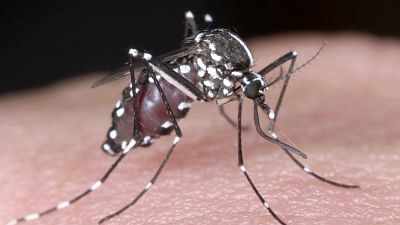Real-time genomic surveillance, which uses sequencing to analyse the genetic material of pathogens, could prevent the next pandemic, a new study says.
Real-time genomic surveillance could be used to detect new diseases and superbugs quickly and prevent future epidemics, experts argue in a new report.
Genomic surveillance is a way to track pathogens by looking at the information contained in the genetic material found in an organism or virus.
By sequencing this genetic material, scientists can see its unique characteristics and use the information to track the spread of a virus, how it is changing, and develop better treatments and public health policies.
“The paper is a multidisciplinary state-of-the-art review of using whole genome sequencing technology as a tool for public health surveillance and monitoring of disease, especially those that have epidemic or pandemic potential,” Marc Struelens, a professor at the Université libre de Bruxelles (Free University of Brussels) in Belgium, and former chief microbiologist at the European Centre for Disease Prevention and Control (ECDC), told Euronews Health.
“A local outbreak today may become the world’s next pandemic crisis tomorrow,” added Struelens, who was the lead author of the report.
Genomic surveillance became a widely used tool during the COVID-19 pandemic to help scientists monitor how the virus evolved with new variants. Struelens compares the virus to a “moving target”.
In the new report published in the journal Frontiers in Science, the authors, a collective of experts from the European Society for Clinical Microbiology and Infectious Diseases, call for universal access to real-time surveillance as a useful tool to prevent the next pandemic.
‘One Health’ approach
With the health of humans, animals, and the environment linked, collaboration across these areas is also necessary to address health challenges effectively, experts argue.
For example, as several infectious diseases can spread from animals to humans, monitoring them may prevent future outbreaks. Experts estimate that 60 per cent of human infectious diseases are zoonotic.
“We need to use whole genome sequencing for cross-sector surveillance, because many of the human infectious diseases are caused by zoonotic pathogens, exotic pathogens, microorganisms, viruses, bacteria, fungi that thrive naturally in other species than humans, but can jump species to humans,” Struelens said.
The “One Health” approach, promoted by the World Health Organization (WHO) and other UN organisations, emphasises that the well-being of all living beings is interconnected.
“Even from the egoistic human species perspective, we need to know how we interact with other, ecosystems, and living beings because microbes just travel across the world, species and ecosystems,” Struelens added.
Tackling microbial resistance
Researchers say that real-time genomic surveillance could help them to tackle antimicrobial resistance (AMR) as well.
Though pathogens have always adapted and changed over time, the speed at which superbugs no longer respond to medicines is becoming increasingly concerning.
It was estimated that AMR was the direct cause of 1.27 million global deaths in 2019, according to WHO, with the “misuse and overuse of antimicrobials in humans, animals and plants” being the main driver of the phenomenon.
“Whole genome sequencing can help detect the emergence of these multiple drug-resistant micro-organisms - which can be very difficult to treat - even before they cause disease,” Struelens said.
“We need to have a wider scope, sampling of these bacteria and sequencing of their potential resistance mechanisms to really have, an up-to-date overview and to be alerted before things get out of control,” he added.
Learning lessons from the Covid-19 pandemic
In an effort to strengthen disease response and surveillance, WHO also recently launched a pan-European network for disease control (NDC) in collaboration with the UK Health Security Agency.
“Europe and the world were not prepared for COVID-19, despite repeated warnings from scientists that a global pandemic would strike sooner or later,” Dr Hans Kluge, WHO’s regional director for Europe, said in a statement.
“The next pandemic or global health emergency could be even worse, so we must prepare for it now,” he added, emphasising the need for a global and collaborative approach with common standards.
The network is supposed to be more inclusive than previous disease control networks, incorporating both EU and non-EU countries, the organisation said.
At the time of the launch, 17 countries and 10 public health bodies were part of the network.
The Frontiers of Science report adds that harmonising methods internationally and coordinating timely data sharing globally are key to addressing “cross-border threats from infectious diseases and AMR”.



